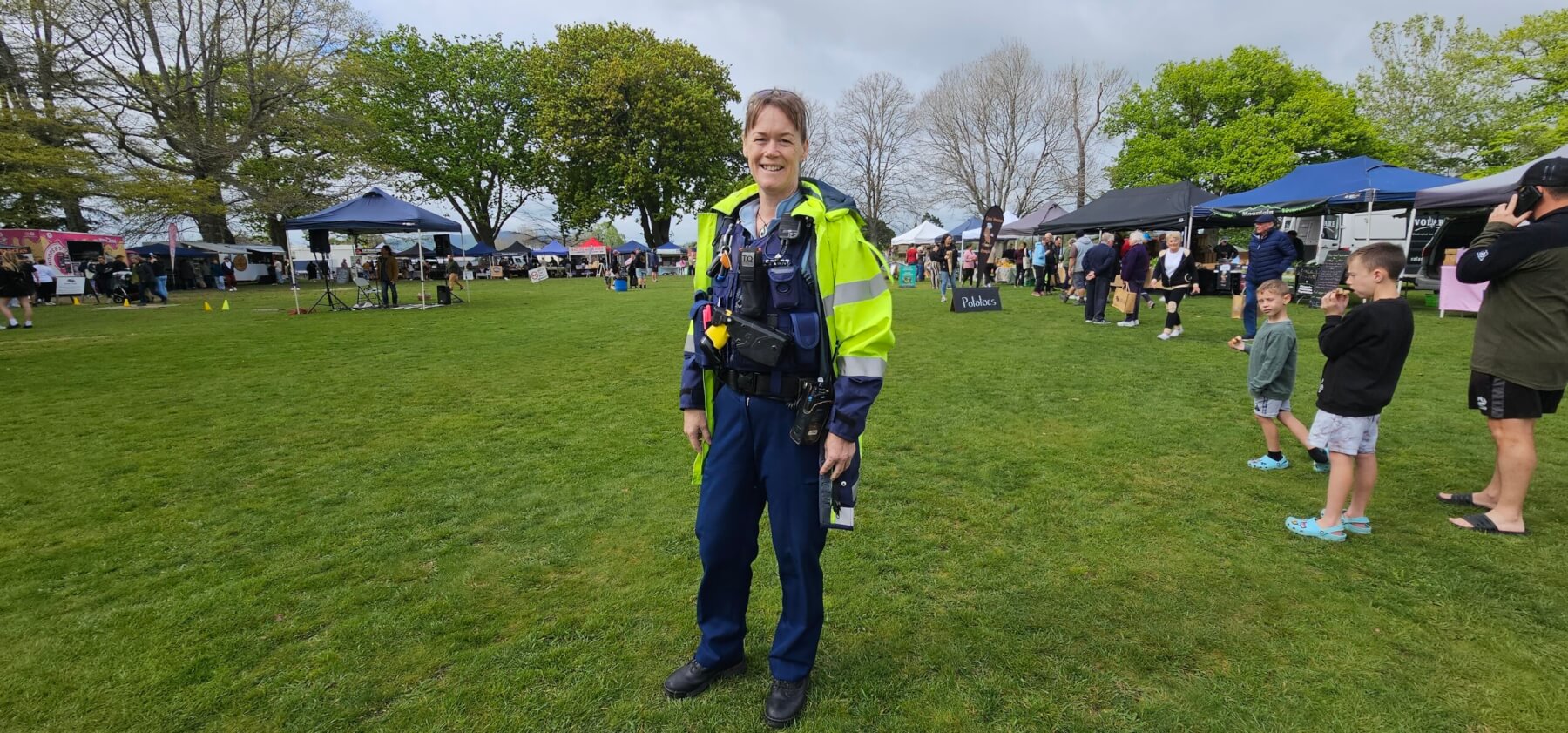
Cambridge Police Station
There has been a lot of korero in the media around the impact of social media on young people and appropriate protections.

Deb Hann – Senior Constable at the Cambridge Farmers’ Market. Photo: Mary Anne Gill
After dealing with a recent report, I want to highlight the associated problem of harmful digital communication. It can be emotionally damaging for someone who becomes the target of nasty, false or threatening posts online. This can happen through social media, public forums or large group chats.
The Harmful Digital Communication Act 2015 aims to prevent and reduce the impact of such offending. It outlines criminal offences for causing serious emotional harm though online behaviour. This may be sharing sensitive personal facts about a person online, threatening, intimidating, or menacing posts, being indecent or obscene towards or persistently harassing someone, making false allegations encouraging others to send a message to an individual to cause that person harm (for example, bullying/threatening), making a false allegation, inciting or encouraging an individual to hurt themselves or belittling someone for their skin colour, race, ethnic or national origins, religion, gender, sexual orientation or disability. Of note, this applies to when an individual is targeted, not an organisation.
Practical examples include sharing an intimate photo or video of someone without their consent, spreading false information that damages someone’s reputation and repeated, targeted online harassment.
If you are a victim of such online behaviour, immediately report to Netsafe. The Netsafe.org.nz website also has detailed information around keeping ourselves safe online. For criminal offending, also report to police.

Shock at seeing images. Photo: Mikhail Nilov, pexels.com
Keeping with online matters, we continue to get reports of sextortion. This is where a scammer initiates contact with a person online using a fake profile and chats with them to build a false sense of trust.
Early on, they move the conversation to requesting intimate photos, sometimes offering their ‘own’ first. Once received from the victim, the scammer then demands payment with the threat of releasing the photos publicly.
While such scams can affect any age group, victims are frequently young people who delay telling anyone due to embarrassment. The easiest way to avoid this? Do not send intimate photos. Once they are off your phone, you lose all control over how they are used, where they appear or who views them.
Only respond to chat requests from people you know in real life. If unavoidable, do your due diligence. Put the profile picture into a google image search, check how old the profile is and whether it has friends and activity indicative of being a real person. If in doubt, disengage and block.








